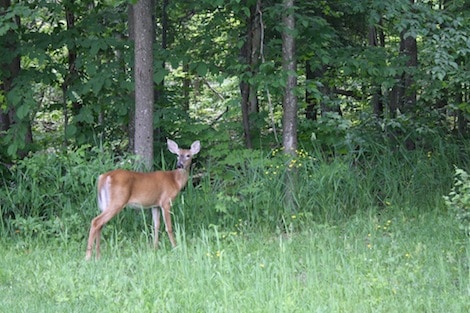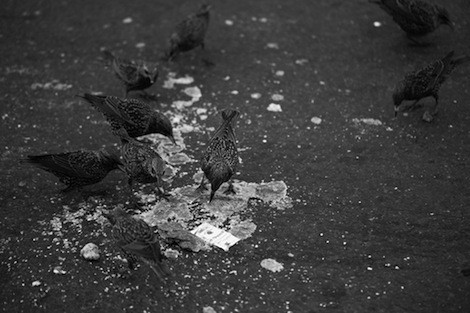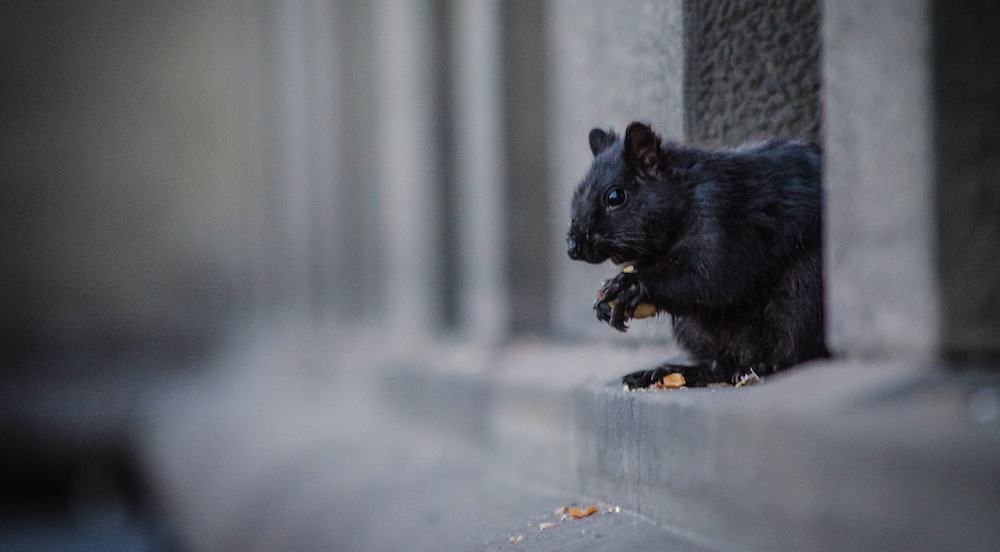Squirrels are common to all three U of T campuses. The evil but deceptively cute creatures whose sole pleasure is derived from terrorizing the U of T student body. However, comparing the three campuses reveals unique landscapes, flora, and fauna.
UTM

CAROLYN LEVETT/THE VARSITY
Possibly the campus which is best integrated into its surroundings, UTM is located in the Credit River valley, sandwiched between the Carolinian and Great Lakes-St. Lawrence forest regions in a protected Greenbelt area. It is not uncommon for students to catch a glimpse of deer from the neighbouring Erindale Park, and studious patrons of the Hazel McCallion Library overlooking this park can often watch the deer during moments of academic frustration. The 225-acre campus is also located along the Credit River, a major watershed that flows into Lake Ontario. Mississauga is home to a diverse set of flora and fauna, including mudpuppies, leopard frogs, snowy owls, musclewood, prickly gooseberry, ostrich fern, and witch-hazel. Many of those plants can be used for medicinal or cosmetic purposes: witch-hazel has traditionally been used to treat menstrual pain, and major cosmetic companies now use it as a base for toners.
UTSC

MILAN ILNYCKYJ/FLICKR
UTSC is surrounded by the world-famous Scaborough Bluffs. Its geology provides a great deal of historical information about the area. The Scarborough Bluffs are 14 kilometres long and 100 metres high. They were created by the breakdown of packed clay soil, and they record the final stages of the Great Ice Age. Alternating layers of soil represent the different stages of ice’s advance and retreat across the land from as recently as 12,000 years ago. The first 46 metres of the bluffs contain a multitude of fossilized plants and animals. The present-day animals are plentiful, too. Nearby Rouge Park is at the northern edge of the Carolinian life zone, which contains more species than any other Canadian life zone: 762 plants, 225 birds, 55 fish, 27 mammals, and 19 reptiles and amphibians. Set apart from the other two campuses, UTSC exists in a residential neighbourhood, although, notably, the Highland Creek that runs through it is the most urbanized watershed in the Toronto area. UTSC students also have incredible access to animals from all over the world, with the Toronto Zoo only a bus ride away.
UTSG
Located in downtown Toronto, the St. George campus exists in the midst of the urban cityscape quite different from the Scarborough and Mississauga campuses. The broad landscape surrounding the downtown campus includes beautiful views of skyscrapers, giving the campus its exceptional individuality. This is not to say that the downtown campus is free of wildlife. Summertime brings about the best in terms of exploring the flora on campus, which is rich with the colours and scents of flowers. Though the city landscape does not provide a suitable habitat for deer, the fauna within the downtown campus, as any residence student will tell you, consist largely of squirrels. UTSG’s “boundless” squirrels are a source of pleasure to some, but a nuisance to many students, as they gnaw their way in through the windows and relish every bite of food they come across in residence. The studious, who at work late at night, may glimpse a raccoon. More easily spotted are the starlings and pigeons.
The effects that urbanization has had on the natural environment around the three campuses may have caused irreversible changes to the environment as the campuses react to a drastically growing number of students, but students can still seek natural beauty just off-site. The areas that surround our campuses are much like the education and courses they offer to students — diverse, distinct, and attractive.
With files from Ishita Petkar


